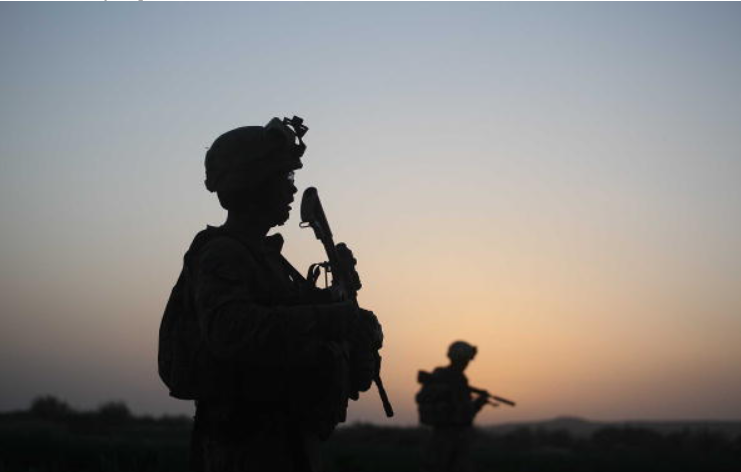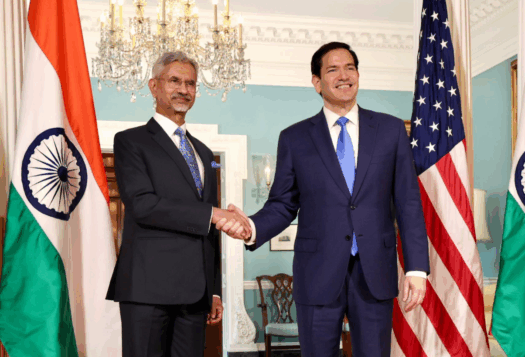
*The author debated whether mirror or window was best and decided mirror since it requires self-reflection.
The reviews, recriminations, and accusations on the U.S. role in Afghanistan have already begun. Many will likely focus on the last year or two and the decision making in withdrawal and the negotiated deal that former President Trump signed with the Taliban and the Biden Administration implemented. However, there is a larger, historical context that is central to this story. In several respects, the die was cast for the most recent tragic events in the first two to three years of the Afghan War. Actions since then have been shaped by decisions made in the 2001-2003 period. While Americans hate history—and especially history that casts us in bad light—the only way to move forward productively is to understand and appreciate the history that brought us to where we are today.
There are four overarching elements of U.S. decisions and actions in the first two years of the war that shaped the ultimate outcome, even as other decisions and actions both good and bad played a role along the way. These four include: the decision to invade Iraq, the failure to cut a deal with Pakistan on Afghanistan, an over-emphasis on the military dimension, and a lack of continuity in our involvement.
The Invasion of Iraq
The invasion of Iraq is by far the most important reason why we failed in Afghanistan and it is something we always forget. This is indicated by various reviews of the Afghan War including the most recent report by the Special Inspector for Afghanistan Reconstruction. However, this fact is central to all decisions and actions in Afghanistan, including diverting military power, economic resources, and policy focus to Iraq even during the Obama’s administrations surge after 2009. If the effort in time, intellectual and policy commitment, lives, personnel, and resources that went into Iraq had gone into Afghanistan we would not be here today with Afghans caught in the wheelbases of C-17s leaving the country.
In several respects, the die was cast for the most recent tragic events in the first two to three years of the Afghan War. Actions since then have been shaped by decisions made in the 2001-2003 period.
Starting early in 2002, the United States took its eyes off the ball. The Taliban, the Pakistani government, as well as broader Afghan society saw this and responded with the realization that time was on their side. Meanwhile, the Iraq invasion invigorated Salafi-jihadism and al Qaeda which had suffered significant blows in 2001 and early 2002. The United States and its allies had a chance to strike a decisive blow in 2002-2005 but we failed to follow up our initial success and al Qaeda, ISIS, and their allies and sympathizers remain potent threats today. Time has shown the Iraq invasion—which included inadequate force levels, poor planning, and the lack of follow up—to be perhaps the United States’ greatest strategic mistake. The consequences of which are still unfolding and are likely to exceed those of the U.S. return to isolationism after WWI.
The Failure to Cut a Deal With Pakistan
Almost all U.S. policymakers, military personnel, and informed citizens would be aghast at the idea of arranging a deal with Pakistan for understandable reasons—viewing Pakistan as barely more than an enemy given its support for the Taliban and terrorist groups. However, from a purely realpolitik perspective a deal cut with Pakistan in 2002 or 2003 would have invested Pakistan in a solution. Pakistan has long been unwilling to accept a strong, viable, independent Afghanistan for a variety of historical, geopolitical, and internal ethnic reasons. While Islamabad has the capacity to weaken Afghanistan because of the long border, control of trade, relative size and wealth, and its ethnic influence, it lacks the capacity or desire to make Afghanistan governable and instead it seeks a weak, pliant neighbor even if it is governed by an unstable, violent, reactionary regime that allows international terrorism to fester. The only way to have a stable and non-threatening Afghanistan is to make it in Pakistan’s interest.
In 2002-2003 the United States was at the height of its power with considerable moral authority with other governments following 9/11 (assuming we were not going to squander it all by invading Iraq). This provided the United States with substantial potential leverage with Pakistan to accept and cooperate with a strong government in Kabul that Islamabad did not dominate—while still needing to convince Pakistan of the seriousness of U.S. commitment. At the time, Pakistan was ruled by General Musharraf, who despite all his many flaws was probably the last Pakistani leader the United States could have collaborated with in such a way. A quiet deal, or de-facto relationship, would have been to “share” external influence in Afghanistan, harkening back to a 19th century style politics. Even though we generally eschew such deals today, it might have worked.

Such a deal would be broader than other U.S.-Pakistan cooperation efforts on Afghanistan. The United States could have helped rebuild Afghanistan and establish a stable polity, insuring the influence of the Northern Alliance and others, while allowing Pakistan to have political and economic role in Afghanistan, and keeping Indian influence at a bare minimum. In turn Pakistan could have cracked down much more substantially on the Taliban remnants and other terrorist groups including anti-Indian ones, brokered some reconciliation with parts of the Taliban, and supported a new Afghan government. The United States could potentially have limited India’s role in Afghanistan sufficiently to assuage Pakistan’s paranoia and leveraged that to pressure Islamabad to cut support for anti-Indian terrorists, perhaps even as a part of the stand-down after the separate 2001-2002 near war crisis between India and Pakistan. While a difficult diplomatic dance, it would have been better to try, rather than tolerating Pakistani efforts to undermine Afghanistan by allowing the Taliban to rebuild inside Pakistan. Cutting a deal with Pakistan and some of the Taliban would be hard to swallow, but we have done such realpolitik deals in the past that have worked in our interest, such as supporting Marxist Yugoslavia when Tito broke with Stalin in 1948 and maintaining a cooperative relationship even after the Soviet Union regained some influence in Belgrade. The bottom line is there is no solution to Afghanistan’s problems without Pakistan unless Washington is to go to war with Islamabad.
Military Overemphasis
Throughout our 20-year war the United States substantially overemphasized the military dimension of our policy and strategy. This was and is a problem in our approach to Afghanistan and has been and continues to be an issue in every counterterrorism focused mission. Despite libraries of studies, policy memorandums, and speeches across the political spectrum calling for much more civilian involvement the United States never seriously organized and funded civilian efforts and instead focused on killing or capturing individuals or groups. All those studies, memorandums, and speeches acknowledged that in the absence a major non-military effort any tactical gains would be ephemeral, as we are observing in Afghanistan.
In a related fashion we need to recognize that the mission in Afghanistan was always some form of “nation-building” whether we liked it or not. We do not always get to choose the mission—the situation and environment shape the mission. The terrorist problem in Afghanistan existed and may re-emerge because Afghanistan is a failed political entity. If we want to address the problem, as opposed to cope with external manifestations from time to time (e.g., 9/11), we need to build some form a viable and stable political structure. We did pursue many “nation-building” activities in Afghanistan and enjoyed some success, but we made a mistake by trying to create a centralized, strong, modern nation-state, often divorced from local political, economic, social, and cultural structures and practices.
As the dust settles on the recent chapter in U.S. relations with Afghanistan (this book is by no means finished), we should take a deep, honest look at our record and realize that decisions made 18-19 years ago shape events today.
If in 2002 we made a large, sustained military commitment to kick-start rebuilding and transitioned to a massive long-term civilian effort (government run, not outsourced to for-profit companies who are focused on their bottom line) there would be a substantially lower probability that we would be in our current predicament. The Obama Administration recognized the need for a civilian surge to match the military surge but was unable to obtain and sustain the resource commitment. In the broader scheme Afghanistan is a manifestation of a fundamental problem in U.S. national security and foreign policy, the dominance of the military (and intelligence agencies) and the relative institutional weakness of the State Department and Agency of International Development (AID).
Lack of Continuity
We fought a TDY (temporary duty) war when we needed a PCS (permanent change in station) commitment. While the United States was in Afghanistan for 20 years, in reality we there for a few months to a year, 20 times. The constant rotation of personnel undermined our verbal statements of our commitment and destroyed continuity—significantly weakening our actual capabilities. This rotation policy led to the total U.S. capability being much less than the sum of the parts. The reasons for this policy are well-known and understandable (e.g., the United States has other global commitments) but they are a significant contributor to our failure as in effect we were fighting with one hand tied behind our back. There is no easy solution but constantly changing commanders and personnel shows we are not “in it to win it”. Afghans, the Taliban, and Pakistanis are all living “PCS”.
We could have let the mission shape our organization, manning and personnel, leadership and training, and resourcing far more than we did. We attempted to sandwich the Afghan war into existing structures in order to minimize the disruption to established organizations and processes. This reinforced the temporary nature of the operation and reduced the actual capabilities of all elements of national power below its potential. Perhaps in 2002 we should have created a permanent U.S. government organization dedicated to Afghanistan fully combining State/AID, DOD, and other departments and agencies and not just create a series of ad hoc temporary structures with a constant set of rotating people on short term tours.
As the dust settles on the recent chapter in U.S. relations with Afghanistan (this book is by no means finished), we should take a deep, honest look at our record and realize that decisions made 18-19 years ago shape events today. This is an important lesson as decisions we are making today on other issues, for example the limited (to date) US response internationally to COVID-19, continued economic protectionism in Indo-Pacific region, or withdrawing from arms control regimes to gain achieve narrow improvements in military capabilities.
Harry Hannah is a retired CIA officer who worked on a variety of intelligence issues after 34 years in the Intelligence Community. CIA approval for publication does not represent Agency endorsement or verification of this work.
Editor’s Note: As the United States withdraws from Afghanistan and ends its longest war, Afghan citizens are bearing the brunt of the crisis. In the coming weeks, South Asian Voices is publishing personal reflections from our friends in and from Afghanistan here.
***
Image 1: Joe Raedle via Getty Images
Image 2: Mark Wilson via Getty Images


